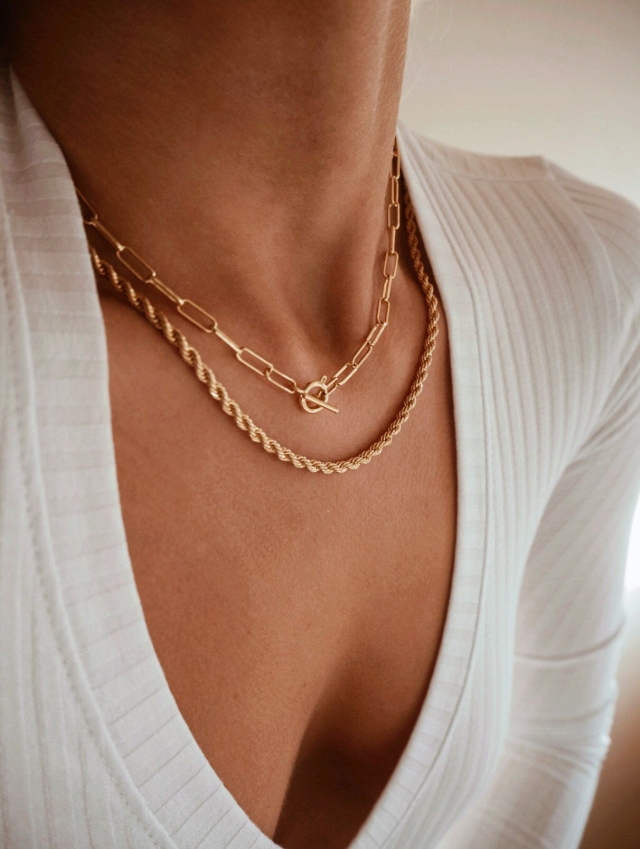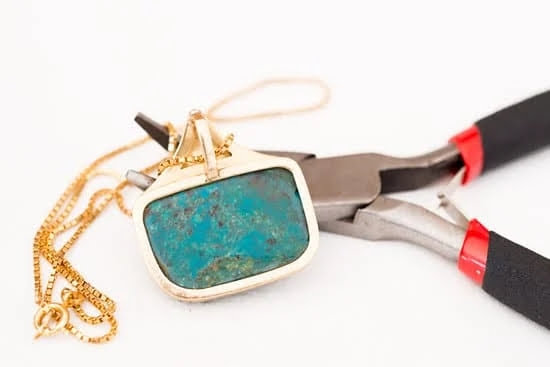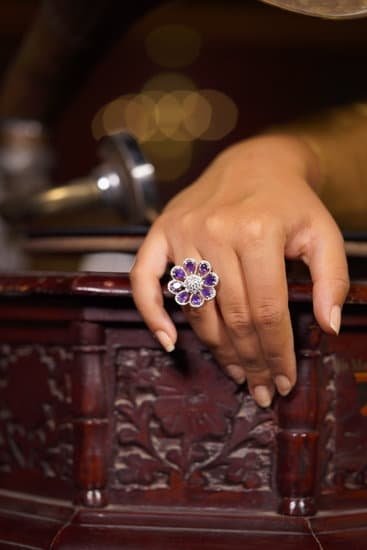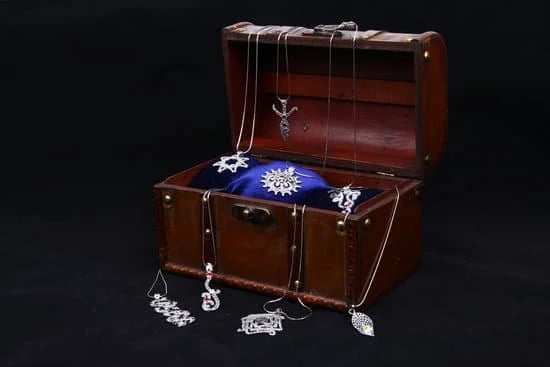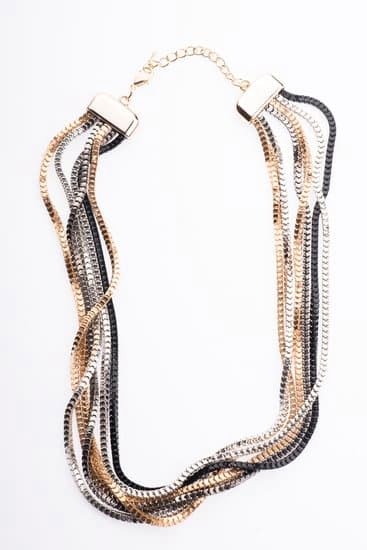Polymer clay jewelry materials is a great option for those looking to create beautiful and unique jewelry. Polymer clay is a type of plastic-based material that has the look and feel of regular clay, but with enhanced durability. Because this type of material is made of PVC (polyvinyl chloride), it offers a range of advantages, such as being able to be molded into any desired shape and size.
Furthermore, polymer clay items retain their color and shape well when exposed to heat or other environmental factors. This makes polymer clay ideal for creating accessories that can survive everyday wear and tear.
Some popular designs made from polymer clay include brightly colored beads, earrings, necklaces, pendants and even customized bangles or rings. For once off pieces or mass production runs, creating jewelry from polymer clays can be cost effective due to its relatively low cost compared to other materials like gold or silver.
It’s also fast and efficient as it does not require tools such as joining tools or expensive solders used in metal works for jewellery making. It’s also eco-friendly because it does not contain metals that may harm the environment thereby reducing its overall impact on nature.
Due to its easy moldability, it’s possible for DIY jewelry makers to make intricate shapes like animals, flowers or geometric patterns. Professional artists may even use polymer clay in combination with found object pieces from nature like pebbles after they have been sanded down into desirably smooth surfaces which can then be adhered onto pendants made out of the same type of polymer clay material.
The ability to combine colors makes polymer clay jewelry truly unique since no two pieces will look identical due to the inherent variations between color layers and textures supplied by this type of material.
Types of Polymer Clay on the Market
Sculpting jewelry pieces and other objects with polymer clay is a popular activity for craftspeople of all ages. Polymer clay is an equitable medium, and the types available on the market can suit any creative need. Artists should familiarize themselves with the varieties of polymer clay in order to select the best option for their specific project.
One type of polymer clay that is a good pick for basic beading and jewelry-making is standard Fimo Clay. Fimo is inexpensive and very flexible, as well as in available an extensive variety of colors.
The main drawback that comes up when using Fimo clays are their fragility; though it remains workable after baking, unless sufficient extra layers of color coating has been applied, Fimo Clays tend to chip easily due to their relative lack of strength and flexibility. Generally, they should not be used when making more intricate or delicate works.
For those seeking more durability from a finished product, Sculpey III (a brand name) may be a better choice than standard polymer clays, such as Fimo. Sculpey III also comes in numerous colors and packs together extremely tightly during curing – which results in greater strength compared to generic polymer clay brands.
As an additional advantage, Sculpey III has lower shrinkage rates after baking compared to other varieties of clay. This makes it especially suitable for projects that require high levels of detail or delicate assemblies that typical polymer clay could damage by shrinking away from itself during cure time.
The last two major types are Kato Polyclay and Prosculpt Clay – both higher-end varieties meant for experienced sculptors. These more expensive variants offer more options than either standard generic store brand clays or even brand-name items like Sculpey III; they offer greater flexibility without sacrificing strength or detail precision in exchange.
They also allow artists access to mica-shift colors – meaning they change hues based on light angles – as well as semi-opaque matte finishes not achievable through typical synthetic clays. For highly experienced users only.
Tools and Supplies Needed for Working with Polymer Clay Jewelry
The tools and supplies needed for working with polymer clay jewelry will vary depending on the project. Before beginning, it is important to consider all the items that might be necessary in order to create something beautiful. Artists may choose between reusable and disposable items when purchasing their materials.
Reusable supplies should be made of quality materials that are resistant to heat and other elements that may affect the properties of the clay. In addition, since polymer clay can remain soft after baking and molding, bakers need special tools to ensure items preserve their shape once cooled. Most commonly used must-have items include ovens of various sizes, cutting wires with smooth blades, glass eyes cabochons, silicone molds, tracing paper and cutting mats.
In addition to the essential tools mentioned above, crafters will require a selection of paints or stains for customization purposes. A small range of acrylic paints or alcohol inks can create backgrounds that really pop against bold colors from colored clays like Fimo or Kato Polyclay.
Metallic finishes can also transform plain polymer into a stunning piece; they offer a glossy look while offering great durability when exposed to hard surfaces. Furthermore, sealers and varnishes can add a subtle gloss which helps protect items and prevent staining as well as buffing away surface imperfections on hand-crafted pieces.
Polymer craft clay offers excellent versatility when crafting one-of-a-kind pieces such as earrings and pendants; sculpted part details like eyes an noses dimensional textured effects , custom marbles for accessories like key chains.Regardless ofthe design , there’s bound to be creating tools from brushes to sandpaper blotters that enhance each new design. The possibilities are truly limitless with polymer clay jewelry making.
Preparation before Working with Polymer Clay Jewelry
Before starting to work with polymer clay jewelry, it is important to make sure you have a clean and well-prepared workspace. First, work on a flat and smooth surface such as a nonporous cutting board or large piece of ceramic tile. If your workspace does not have enough room for movement or kneading, choose an area that is easy to wipe down in case there are any spills or messes.
Then cover the surface with parchment paper, wax paper, or a craft mat for easy cleanup. Additionally, use small bowls for color mixing and separating individual clays from each other.
Another important step when prepping to work with polymer clay is conditioning the clay. This can be done in various ways such as kneading by hand until the clay becomes soft and uniform in consistency. Some scultping tools may aid in this process such as a pasta machine which results in evenly worked pieces of clay.
It is also advised to separate different colors of clay into their own sections prior to working. This prevents one color blending into another while working on jewelry items and allows one’s creativity to be unhindered by other colors influencing them.
Finally when prepping the workspace before working with polymer clay it may be beneficial to review some tutorials if this is new territory for you since materials can vary depending on the type of work being produced. Methods such as texturing or frosting can add uniqueness and dimensionality these projects; however, some clays may need additional components like baking that prints patterns onto finished pieces.
Therefore it may be valuable researching these types of treatments prior to beginning any project by exploring written instructions or video demos for creating desired effects on final pieces.
Molding and Shaping Polymer Clay Jewelry
Molding polymer clay jewelry is a great way to create unique pieces of one-of-a-kind jewelry that will be admired and cherished by you or your special someone. There are several methods for manipulating the clay figures into shapes that can be used in jewelry. The two most popular methods are sculpting and cutting.
Sculpting, as it suggests, is when you form the clay freehand with your fingers and any other tools you may find helpful such as toothpicks or X-Acto blades. Cutting involves using cookie cutters or various size pattern prints to form the shapes before baking them into the desired shape.
You can also use molds made from plaster casts to give more definition to the pieces you are creating from polymer clay. Molds come in different forms including geometric shapes like circles, rectangles, and triangles; archetypal animals like horses and cats; even cartoon characters like Spongebob Squarepants.
Using this form of molding allows for greater complexity when composing an artwork. Preforming techniques such as diamond patterns, spiral designs, color transitions, contours, embossment – any surface effects you think of – can all be achieved through these molds.
Finally, painting techniques can be used to create intricate details for your polymer clay jewelry creations. This includes adding textures by smearing paint directly onto dry pieces as well as using specialized tools that offer interesting ways to highlight some parts more than others.
For instance, adding bubbly effects to simulate water droplets or a marble-like effect on a chunky necklace pendant gives creativity more control over the look of their finished product than ever before. Different colors can also be combined together to make unique kinds of artworks – vibrant hues that amplify each other’s beauty.
Painting, Decorating and Coating Techniques
When it comes to making polymer clay jewelry, there is a wide range of materials that can be used. One of the most notable is the use of paints and other crafting supplies when designing pieces. Painting and decorating with polymer clay offers numerous opportunities for creativity as one can choose from an array of color palettes, create intricate details using brushes or applicators, or even just use pigment powders to add texture to the jewelry.
Moreover, different coating techniques may also be used in order to add another layer of depth to the design. Varnish is great for protecting pieces from breaks and scratches while also providing an extra touch of shine. Swarovski crystals are popular when coating items due to its glittery look, allowing them to go from simple jewelry designs into truly mesmerizing creations that catch the eye.
Tumbling and polishing techniques will help refine the look of your polymer clay jewelry. As you tumbler your pieces, they’ll achieve a smooth finish thanks to all the movement within it which will reduce any preventable damage caused by handling it Additionally, through polishing techniques such as buffing, sanding and waxing some level of shine can be achieved giving them a more luxurious feel.
Lastly, many designers like to use UV resin on their works in order to provide an outer coating which protects against moisture and other elements which could cause degradation over time if not treated with this extra step.
Though metal clays have become increasingly popular for high-end jewelry manufacturing due precisely because of their versatility and affordability as compared with precious metals like gold or silver; polymer clays remain still a popular choice among artisans who are looking for low cost production rates without sacrificing beauty. With so many possibilities of creating unique customjewelry designs made with polyclay choosing what suits best their individual needs becomes quite simple-it all depends on personal preference.
Tips and Tricks for Working with Polymer Clay Jewelry
Polymer clay is a wonderful way to add unique and colorful touches to jewelry. Not only can you craft unique shapes and designs, but the vibrant colors available bring added life to your pieces. Before you can begin making jewelry with polymer clay, it’s important to make sure you have all of the right tools and materials on hand. This includes oven-safe clay such as Super Sculpey, molds, carving tools and top coats or sealants.
When first starting out with polymer clay arts, using molds is a great option. They are easily found online or in craft stores, many having intricate designs ranging from skulls to flowers.
Start by picking one that will work for the piece you have in mind and kneading some of your chosen clay until it’s warm and pliable enough for use. Afterward, press the tempered clay into the selected mold ensuring that each detail gets its due form before popping out of the mold with ease when done correctly.
Once you have carefully removed your work from its original mold form it’s time to begin carving away at details in order to give your piece a personal flair. You can use sturdy items such as erasers or comfortable leather gloves for protection against sharp edges when sculpting or creating custom designs on a piece of clay.
After completing any desired details it’s time to select either an acrylic sealant or varnish top coat – often times depending on the desired look and feel of the piece itself along with how it will be used (will they get wet ?
). Then simply place your work into an oven safe bowl and fire inside an oven at temperatures ranging between 265-275F properly setting them within 15 minutes while allowing them 60-90 minutes maximum. Now you’re all set with a gorgeous, subtly personalized polymer clay masterpiece.
Conclusion
Polymer clay jewelry is a great medium for creative expression that has shaped the world of jewelry making. Polymer clay is lightweight, comes in a variety of colors and textures, and can be manipulated with basic tools such as rollers, cutters and stamps to create a wide range of designs. The number one advantage of polymer clay jewelry over metal or stone jewelry is its affordability.
You can use very little material while still making an attractive piece that looks like it cost much more. You also don’t need expensive tools to make your own jewelry, as basic tools are all you’ll need.
Becoming a successful polymer clay jeweler requires dedication and learning the right techniques to handle the clay correctly. It can be helpful to follow tutorials online or take classes so you fully understand how to use this versatile medium in creative ways. This will allow you to best leverage each unique characteristic of polymer clay so that you maximize your time spent crafting your pieces.
In addition to having the skills necessary for crafting polymer clay jewelry, marketing is another key factor for success. You should strive to showcase your products on social media, website and other platforms in order to draw attention from potential customers who may be interested in buying from you direct or from retailers who wish to offer them in their stores.
As well as getting creative with product photography and building out content to share on these channels, developing relationships within the community through video tutorials and interviews for example could help put your work in front of other customers who may not have otherwise seen them.
Understanding how to work with polymer clay,putting effort into mastering various techniques associated with it while also leveraging digital marketing strategies are all essential steps required if someone wishes become a successful artist selling their polymer creations as jewelry pieces. Working with polymer clay is an exciting adventure that will open up new opportunities for entrepreneurs which when combined with relevant knowledge will hopefully set them on track towards success.

Welcome to my jewelry blog! My name is Sarah and I am the owner of this blog.
I love making jewelry and sharing my creations with others.
So whether you’re someone who loves wearing jewelry yourself or simply enjoys learning about it, be sure to check out my blog for insightful posts on everything related to this exciting topic!

